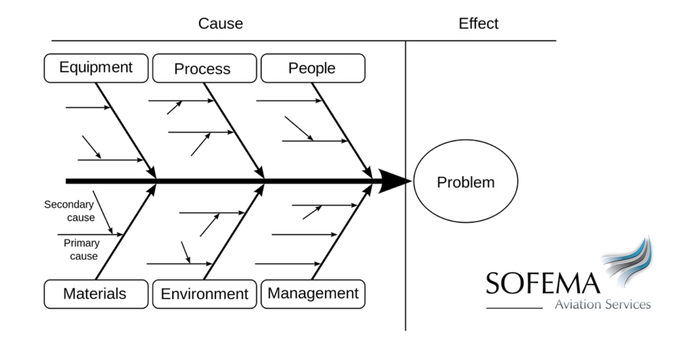Analytical Techniques (RCA Tools)
“Five Whys” Approach
The “five whys” approach. By using this approach, root cause contributors can be identified along with the antecedent events, and potential mitigation or prevention strategies can be suggested on the basis of the answers.
Once the initiating problem is specified, a consecutive series of “why” questions are asked, with each answer becoming the subject of the next question.
Note that with each response, not only does a deeper investigational dive occur, but opportunities for implementing mitigation strategies are highlighted.
Ishikawa Fishbone Diagrams
A fishbone diagram, which is essentially a cause and effect diagram provides for a graphic representation which categorises the potential causes related to a problem in order to identify the root causes.
Steps to create a fishbone diagram:
First lists the problem or issue to be studied.
Now draw a straight line which leading away from the problem
Now Identify a number of potential “causal areas” typically that contain contribution factors to the problem.
These causes are connected to the straight line (How we see the fish bone effect)
Now consider each of the courses in turn for example by brainstorming or using 5 Why questioning, repeating until all the root causes have been identified.
Causal Tree Mapping
A causal tree map is used to define a hierarchy that starts with discovery of the event. It then moves to possible latent and active antecedent or predisposing occurrences, defining root causes for each, and finally provides a classification of the root causes.
Causal tree map allows the mapping of causes, rather than being constrained to accident causation mode. This helps match corrective actions to root causes. Causal statements should show the cause-and-effect relationship, and each human error and procedural deviation should have a preceding cause.
Failure to act in a situation is only causal when there is a pre-existing duty to act. Also, negative descriptors such as “poor” or “inadequate” must be avoided.
Affinity Diagrams
Affinity Diagram Once the event has been defined clearly, it is helpful to use a standardized approach to assess the potential causes of the event.
Which processes were involved or may have contributed to the outcome? What are the expected steps in the process, and were there any deviations from them?
What is currently done to prevent failure at each point and, if not done, why not?
Brainstorming or the use of affinity diagrams can help identify and classify contributing causes of the adverse event
Affinity diagrams used to organize a large number of ideas into natural relationships.
The first step is to record each potential element or idea then to sort into groups with like ideas.
Consider using Affinity Diagrams as a systems approach to classifying errors. With this model, all errors are distinguished as being active (human) and/or latent (systems and processes) in origin. In general, latent causes are process and system errors (technical or organizational) that enable human errors to occur.
Active errors are attributed to behaviour related to skills, rules, or knowledge. By using this approach for classifying events, technical and then organizational factors are considered ahead of human behaviour and patient factors.
Once the event has been defined clearly, a structured RCA is performed to consider both human (active) and system or process (latent) contributing factors. Sofema Aviation Services currently offers multiple courses related to Quality, Safety & Root Cause. Please see www.sassofia.com or email office@sassofia.com or Online@sassofia.com




